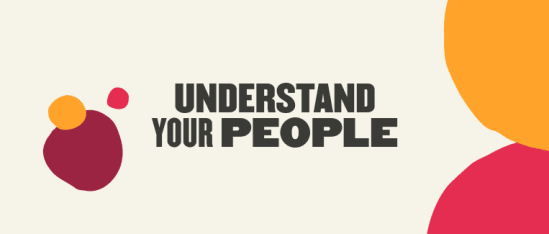Your best chance at boosting retention is in understanding your people better. People analytics is the HR function that uses data-driven insights to help companies understand their people—uncovering surprising sources of talent and counterintuitive insights about what drives various aspects of the employee experience, including performance.
All companies want to understand their people better, but there is still the question of “how” to do this. Here are three rules to get you started.
1. Don’t trust your gut. Trust the data
You might think you know what motivates your people, what traits to look for in a new hire, or how to build great teams. Test your theories against the hard data, and you’ll find the numbers may tell a different story. The amazing thing about data is that it can objectively show us how wrong (or right) we are. The challenge then is in implementing changes that might be counterintuitive to the way you do business.
A real-world example
A quick-service restaurant chain with thousands of outlets worldwide was having a hard time retaining employees (a costly problem that plagues the restaurant industry).
If they could identify their best employees and figure out how to make them stick around, they could improve their bottom line. After pouring through thousands of data points, what they found challenged many of the ways the company operated.
For example, during the hiring process, the company typically looked for social, friendly servers who seemed comfortable in a customer-facing role. The data, however, found that “taskmasters” who were less social but more inclined to focus on their work and minimize distractions were the company’s best performers.
The data also found that longer shifts were hurting productivity. Longer shifts were common practice, as they cut back on commute time and simplified the schedule. Managers thought they were helping employees by having them come in for more hours every day but fewer days per week. By diving into the data, the company found that employee energy fell significantly after six hours, and with that drop in stamina came a decline in overall performance. By changing the shifts from eight hours to six, management created a happier, more productive workforce, translating into better customer service.
2. Data is meaningless without insights
Many companies have made strides in their ability to collect data, but they’re still trying to understand how to analyze it. To do this, you need the right framework to ensure that data acquires meaning. The next stage of the process is to act on those insights to create data-driven decisions.
Another real-world example
Employee attrition at Experian was a problem. The company was facing turnover levels that were 3-4% higher than the industry standard, costing them millions.
Experian needed to know why people were leaving. They needed to understand their global workforce, and they needed to do it fast. As a leading consumer credit reporting company, Experian knew how to collect mountains of data. The challenge was in transforming the data into insights.
The first stage focused on getting the basics right. They identified 200 metrics, including demographics, team size and structure, supervisor performance, and commute length. Then they created a set of consistent definitions for all of their metrics (for example, which contract termination reasons are considered ‘voluntary’ vs. ‘involuntary’).
The second stage was to build a predictive model that could sort through all of the data and identify common traits which could predict flight risk. For example, the data showed that larger teams—10 to 12 people—experienced more turnover. They identified flight risk triggers, like when someone moved further away from the office.
These insights transformed the HR culture from a reactive to a proactive team that could address global problems with company-wide solutions.
3. Small companies can find creative ways to understand their people
Big data isn’t just for big companies. Many new people analytics solutions are simple to deploy and automate many tasks. A core HR platform, like Bob, can help companies track retention and growth and get an overview of how their people are doing. With one centralized data source, companies can form a clear picture of their employees and pair that with industry-wide insights. For example, you can track salary and promotion history to identify outliers who haven’t gotten a raise or a promotion. Once the outliers are identified, you can take appropriate steps to find out why. Or you can set an alert for employees who take too many unexcused absences, which can indicate that something is wrong. Finally, you can also send out pulse surveys to understand engagement and employee sentiment on a real-time basis.
Recommended For Further Reading
Common questions that people analytics can answer include the following:
- How can you build winning teams?
- What are the common traits of top performers within your organization? And how can HR spot these traits in potential hires?
- How can you know if a new hire will succeed?
- How can you better motivate employees?
- Which people are most likely to stay or leave?
- How can you tell if an employee is a flight risk?
HR and data: A winning pair
HR professionals pride themselves on their innate people skills. Instinct and experience do have a role to play in the recruiting, development, and retention of employees—and in identifying the combination of people skills that builds great companies. HR pros who can combine this experience with data-driven insights will have the most impact on a company and its employees.


